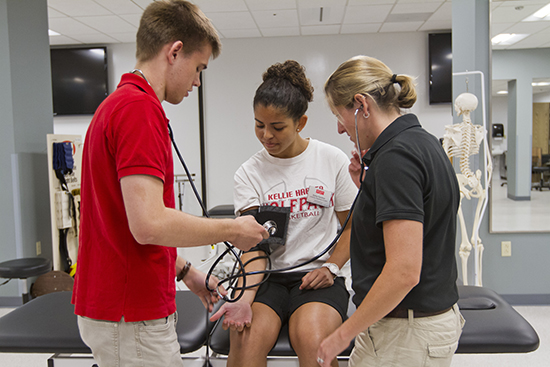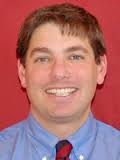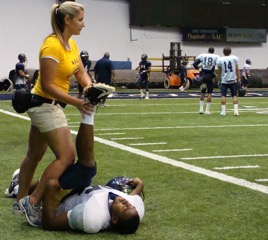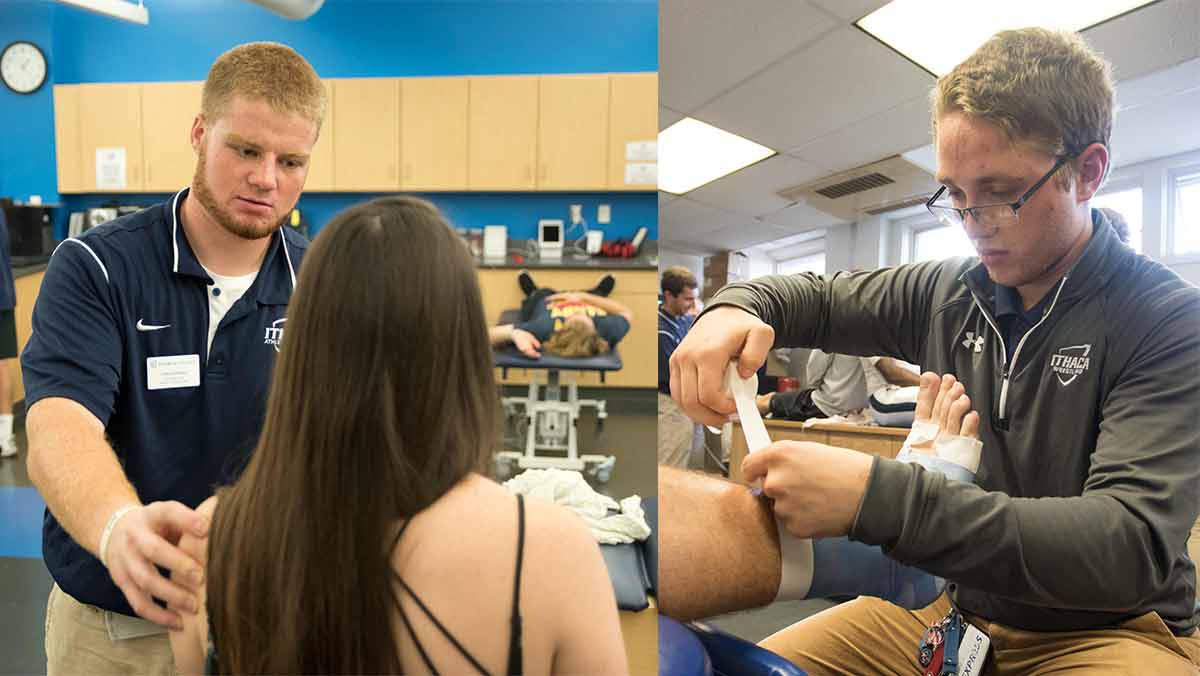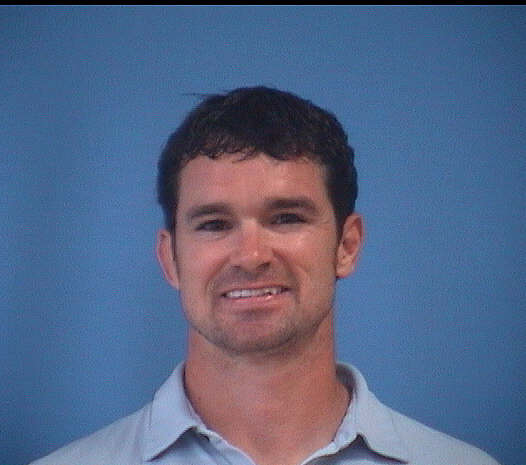
Zeb Sullivan grew up in Dunlap and graduated high school in Woodbine.
He went to Iowa State to study agriculture, economics and animal nutrition – specifically swine nutrition.
He finished ISU with a doctorate in kinesiology – the science of human movement. Instead of better pigs, he ended up helping athletes move better.
“I was powerlifting and competing in Strongman competitions at the time and when I was exposed to kinesiology, I thought ‘This is what I want to do,’” Sullivan said.
Now he’s a member of the Grand View University faculty in Des Moines. He and his colleagues are in the planning stages of offering a master’s program in athletic training.
Sullivan teaches the next generation of professionals who help heal people with muscle and bone injuries and illnesses.
The field is expected to grow by 21 percent over the next decade – much faster than other jobs – according to the U.S. Department of Labor.
And the job is becoming increasingly more complex. Professional associations for athletic trainers are pushing for a master’s degree to be required for entry-level jobs.
The tragic story of Oskaloosa native Tyler Sash illustrates why the field is rapidly changing.
Sash was a popular safety for the Iowa Hawkeyes who also played pro football for the New York Giants. He died last year from a drug overdose. He was 27 years old.
Last week, his family revealed he had advanced stages of chronic traumatic encephalopathy, or CTE, a degenerative brain disease associated with concussions and head injuries.
Sullivan and his colleagues teach athletic training with the philosophy that job No. 1 is injury prevention.
“A lot of people think a trainer’s most important job is improve athletic performance,” Sullivan said. “It’s not. That’s secondary to making sure bodies are healthy and strong.”
More than 60 years ago, famed college football coach Paul “Bear” Bryant conducted a hellish training camp for his Texas A&M squad.
Bryant denied players water in marathon sessions in the broiling west Texas sun.
Those practices are understood as barbaric today, but the shake it off and play through pain mentality still lingers in sports – especially now that competition is such big business.
The NFL spent years trying to discredit the severity of CTE. Now “concussion protocols” are part of the league’s vocabulary.
Not all the blame lies with leagues, coaches and owners, Sullivan said.
“An athlete is a competitor and wants to play,” he said. “Players at all levels will lie or stretch the truth to stay in a game. Part of our job is being able to see through that and know when it’s time to come out.”
The work Sullivan and his students do is largely invisible. While trainers rush to the side of an injured player in the middle of a game, that’s only a fraction of what the job requires.
Sullivan preaches prevention. His students study a list of subjects from physiology and nutrition to psychology and sleep cycles.
Psychology, of course, is the study of how the human brain works. The better an athletic trainer knows that, the more likely they are to provide quality care.
A sudden onset of depression, for example, could be a symptom of an undiagnosed concussion, Sullivan said.
Mental wellness is as important to performance as muscles and mechanics. As the late baseball philosopher Yogi Berra is said to have said, sports are “90 percent mental. The other half is physical.”
Sports are practically religion in America. Nearly every day at the paragraph factory, readers click on stories about the Hawkeyes and Cyclones more than any other subject.
College coaches at big universities are the highest paid public employees in most states including Iowa.
Pro teams are worth billions of dollars. A 30-second advertisement in next week’s Super Bowl costs $5 million.
The pressure to keep great athletes at the peak of performance is enormous.
But Sullivan and his colleagues and students are more concerned with long-term wellness of the gladiators in their charge.
“You have to value you the person more than the result of any game,” Sullivan said. “A healthy athlete is our victory.”
Daniel P. Finney, the Register’s Metro Voice columnist, is a Drake University alumnus who grew up in Winterset and east Des Moines. Reach him at 515-284-8144 or dafinney@dmreg.com. Twitter: @newsmanone.
